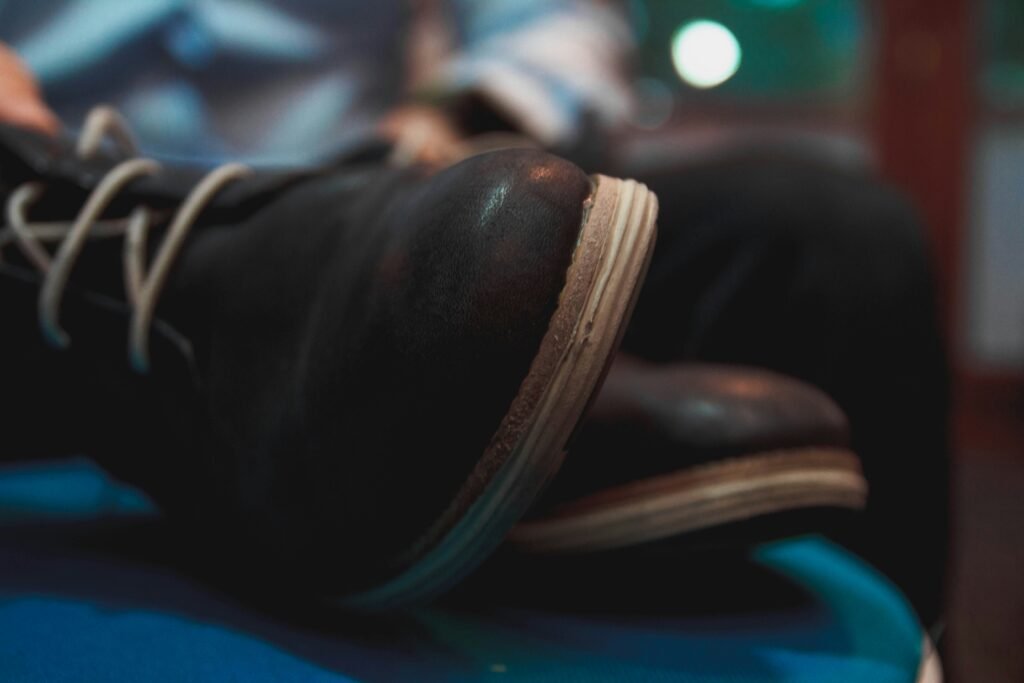The Experts’ Secrets to Cleaning Alligator Leather
You’ve always admired the elegant and exotic look of alligator leather, but you’re unsure how to properly clean and maintain it. Well, fear not! In this article, you will uncover the experts’ secrets to cleaning alligator leather, learning the techniques that will keep your prized possessions looking pristine and prolong their lifespan. So whether you own alligator leather shoes, handbags, or accessories, get ready to discover the tips and tricks that will ensure your pieces remain luxurious and timeless.

This image is property of images.unsplash.com.
Understanding Alligator Leather
Alligator leather is a type of exotic leather that is highly prized for its unique texture and durability. It is made from the skin of alligators, which are native to various regions around the world. The process of making alligator leather involves tanning and treating the raw skin to produce a refined and luxurious material that can be crafted into various products such as bags, belts, shoes, and wallets.
What is Alligator Leather?
Alligator leather is a luxury material that is known for its distinct scale patterns and texture. The skin of alligators is prized for its strength and flexibility, making it an ideal choice for high-end leather goods. Alligator leather is highly valued in the fashion industry due to its rarity and exclusivity. It offers a unique and luxurious appearance that sets it apart from other types of leather.
Characteristics of Alligator Leather
Alligator leather is known for its distinct scale patterns, which give it a visually stunning appearance. The scales are arranged in rows, creating a beautiful texture that is often compared to a mosaic. The natural oils present in alligator skin give it a soft and supple feel, making it a pleasure to touch. In addition to its distinct texture, alligator leather is also highly durable and resistant to wear and tear.
Different Types of Alligator Leather
There are several different types of alligator leather, each with its own unique characteristics. The most common types include American alligator, which is known for its large scale patterns and soft texture, and Nile crocodile, which has smaller scale patterns and a slightly rougher texture. Other types of alligator leather include caiman, which has a more pronounced scale pattern, and gavial, which has a narrower snout and flatter scales.
Pre-Cleaning Preparation
Before cleaning alligator leather, it is essential to gather all the necessary supplies. You will need a soft cloth or sponge, a gentle leather cleaner, a damp cloth, a leather conditioner, and a clean cloth for buffing. It is important to choose a leather cleaner and conditioner specifically made for exotic leathers, as regular products may damage or discolor the alligator leather.
Next, carefully examine the alligator leather for any signs of damage or stains. Look for scratches, cuts, or discoloration that may require special attention or professional repair. It is crucial to address any issues before proceeding with the cleaning process to avoid making them worse.
Lastly, remove any loose dirt and debris from the alligator leather. Use a soft cloth or brush to gently wipe away any surface dirt or dust. This step will make the cleaning process more effective and prevent the dirt from scratching the leather during cleaning.
Cleaning Alligator Leather
When cleaning alligator leather, it is essential to test the cleaning product on a small, inconspicuous area first. This will ensure that the cleaner does not cause any discoloration or damage to the leather. Apply a small amount of the cleaner to a hidden area and gently rub it in with a soft cloth. Wait for the leather to dry and assess the results before proceeding with the rest of the cleaning process.
Once you have tested the cleaner and it is safe to use, apply the gentle leather cleaner to the alligator leather. Pour a small amount onto a soft cloth or sponge and gently rub it into the leather using circular motions. Be sure to cover the entire surface, including the edges and seams.
To remove any dirt or grime, gently scrub the leather using a soft-bristled brush or sponge. Avoid using excessive force as this may damage the delicate scales of the alligator leather. Rinse off the cleaner by wiping the leather with a damp cloth. Be careful not to soak the leather as excessive moisture can cause damage.
After rinsing, it is crucial to dry the alligator leather thoroughly. Wipe away any excess moisture with a clean, dry cloth and allow the leather to air dry in a well-ventilated area. Do not use direct heat or a hairdryer as this can cause the leather to shrink or become brittle.
Treating Stains and Spots
If you notice any stains or spots on your alligator leather, it is important to act quickly to prevent them from setting in. Start by blotting the stain or spot immediately with a clean, absorbent cloth or paper towel. Avoid rubbing the stain as this may cause it to spread or penetrate deeper into the leather.
For stubborn stains, use a specialized leather stain remover. These products are formulated specifically for use on alligator leather and can effectively remove a wide range of stains and spots. Follow the instructions provided with the stain remover and apply it directly to the affected area. Gently blot or rub the stain remover into the leather using a soft cloth or sponge.
After applying the stain remover, wait for the recommended amount of time as stated on the product instructions. This will allow the stain remover to penetrate and lift the stain from the leather. If necessary, repeat the process for particularly stubborn stains, but be mindful not to over-treat the leather, as excessive use of stain remover can damage the natural patina of the alligator leather.

This image is property of images.unsplash.com.
Conditioning Alligator Leather
Conditioning is an essential step in maintaining the beauty and longevity of alligator leather. Choose a high-quality leather conditioner specifically formulated for exotic leathers. Avoid using greasy or silicone-based conditioners, as they can clog the pores of the leather and leave a residue.
To condition the alligator leather, apply a small amount of the conditioner to a soft cloth. Rub the conditioner into the leather using gentle, circular motions, ensuring even coverage on the scales and seams. Allow the conditioner to absorb into the leather for the recommended amount of time as stated on the product instructions.
After the conditioner has absorbed, buff the alligator leather with a clean, dry cloth to remove any excess product. This will leave the leather with a rich, lustrous finish and help to restore its natural oils and moisture balance.
Protecting Alligator Leather
Protecting alligator leather from potential damage is crucial to preserving its beauty and durability. Here are some tips to keep in mind:
- Keep the leather away from direct sunlight and heat, as prolonged exposure can cause fading and drying.
- Avoid exposing the leather to water or excessive moisture, as this can cause irreversible damage such as discoloration or warping.
- Store the alligator leather in a cool, dry place to prevent mold or mildew from forming.
- Consider using a leather protector spray specifically made for exotic leathers. This will add an extra layer of protection against stains and spills.
- Regularly clean and condition the alligator leather to maintain its natural oils and suppleness.

This image is property of images.unsplash.com.
Dealing with Mold and Mildew
Mold and mildew can be a common issue, particularly in humid climates. To prevent mold and mildew from forming on your alligator leather, it is crucial to keep it dry and stored in a well-ventilated area. However, if you do notice any mold or mildew, follow these steps to address the issue:
- Mix equal parts of vinegar and water to create a mild cleaning solution. Vinegar is known for its natural antimicrobial properties and can effectively kill mold and mildew.
- Apply the vinegar solution to the affected area using a soft cloth or sponge. Make sure to saturate the mold or mildew completely.
- Allow the vinegar solution to sit on the leather for at least 30 minutes to ensure it penetrates and kills the mold or mildew.
- Gently wipe away the mold or mildew using a clean, damp cloth. Be sure to remove all traces of the fungus.
- After cleaning, dry the alligator leather thoroughly. Use a clean, dry cloth to remove any excess moisture and allow the leather to air dry in a well-ventilated area. Ensure that it is completely dry before storing or using.
Repairing Alligator Leather
While alligator leather is known for its durability, it is still susceptible to scratches, cuts, and other forms of damage. Minor scratches can often be buffed out with a soft cloth or a small amount of leather conditioner. Gently rub the area in a circular motion until the scratch becomes less visible.
For deeper scratches or cuts, it is advisable to consult a professional leather repair specialist. Attempting to repair the damage yourself may result in further damage or irreversible changes to the leather’s appearance.
It is important to note that DIY repair products such as glue or tape should be avoided at all costs. These products can cause more harm than good, leaving permanent marks or discoloration on the alligator leather.
If your alligator leather becomes severely damaged or beyond repair, it is best to take it to a professional who specializes in exotic leather repair. They have the knowledge and expertise to assess the damage and provide the best course of action to restore the leather to its original condition.
Maintaining Alligator Leather
Proper maintenance is key to extending the life of your alligator leather. Regular cleaning and conditioning will help preserve the leather’s beauty and ensure it remains in optimal condition. Here are some maintenance tips to keep in mind:
- Regularly clean the alligator leather using the gentle cleaning process mentioned earlier. This will remove surface dirt and debris, keeping the leather looking its best.
- Condition the leather every few months or as needed. This will replenish the natural oils and moisture, preventing the leather from drying out and cracking.
- Keep the alligator leather away from sharp objects that may scratch or puncture the delicate scales.
- Avoid excessive bending or folding of the leather, as this can cause creasing and permanent damage.
- When not in use, store the alligator leather in a dust bag or cloth to protect it from dust, moisture, and potential scratches.
By following these maintenance tips, you can ensure that your alligator leather products stay in pristine condition for years to come.
Conclusion
Understanding how to properly clean and maintain alligator leather is essential for ensuring its longevity and preserving its natural beauty. From pre-cleaning preparation to conditioning and protecting, each step plays a crucial role in extending the life of this luxurious and unique material.
Remember, when in doubt or for major cleaning or repairs, consult professionals who specialize in exotic leathers. They have the expertise and resources to handle alligator leather with care, ensuring it remains a cherished item in your collection for years to come. With proper care and attention, your alligator leather products can continue to exude elegance and sophistication.



